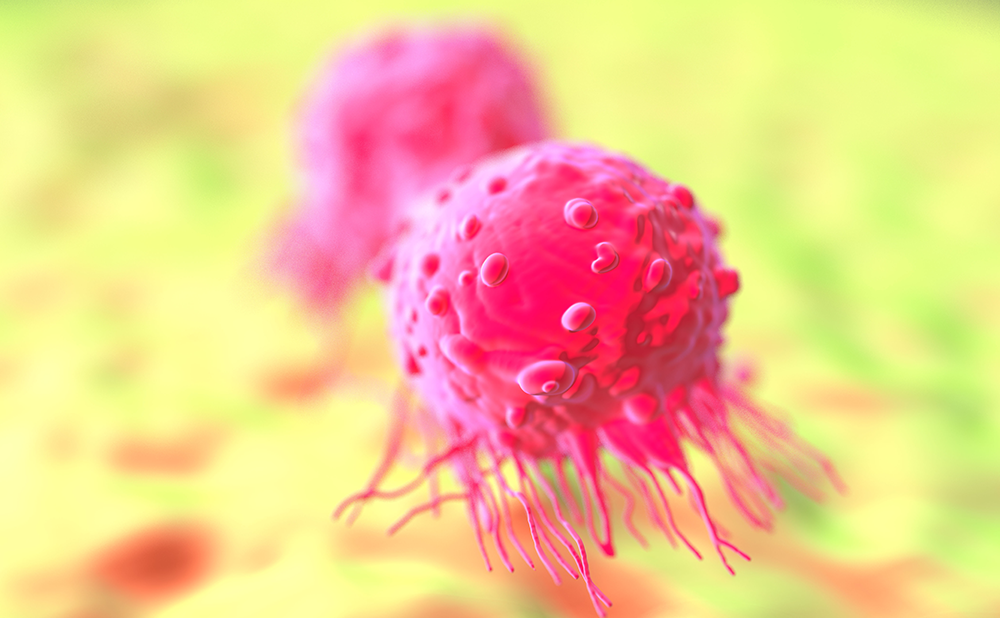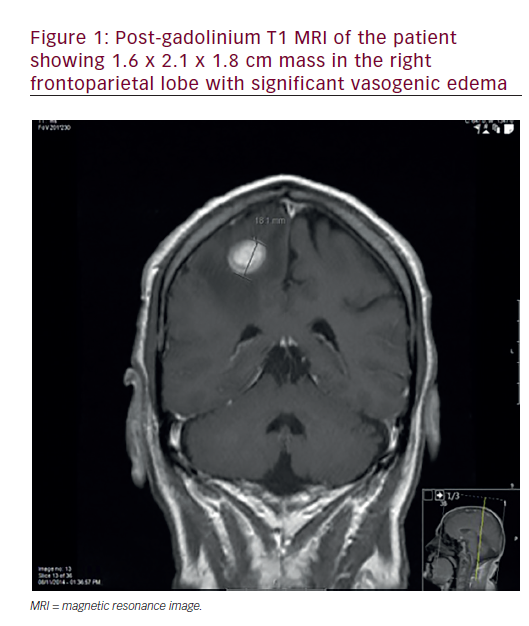Paediatric low-grade gliomas (pLGGs) most commonly develop in the cerebellum and can be resected safely, with minimal neurological complications and long-term cure achieved following surgery alone.1 However, a large proportion of pLGGs that develop in other parts of the brain remain unresectable and ultimately manifest as a chronic disease.2 The most common location at which unresectable pLGG occurs is the optic pathway, often with involvement of the hypothalamus. Tumours in this location threaten a child’s vision and hypothalamic and pituitary function, and treatment is aimed at protecting neurological function and preventing long-term damage. Low-grade tumours that cannot be resected cannot be eradicated, and currently the aim of treatment is to prevent growth and neurological damage, rather than to achieve remission.
The treatment of pLGG has evolved over recent decades.3 Radiation therapy is effective at controlling pLGG but has largely been replaced by other treatment modalities due to its long-term toxicities. Initial trials of chemotherapeutic agents were employed in children under the age of 10 years owing to concerns about the effects of radiation therapy on the developing brain in younger children. However, many older children are also at risk of long-term effects of radiation therapy, such as the development of second malignancies. When coupled with the efficacy of chemotherapy, the result has been that chemotherapy is now increasingly used as first-line therapy for older children and adolescents with LGG.4 Several different chemotherapy regimens are commonly used for children with unresectable pLGG, with combinations of vincristine and carboplatin, or single-agent vinblastine, being regarded as standard-of-care first-line therapy.5–8 These treatment regimens universally employ low-dose chemotherapy that is generally well tolerated and associated with minimal toxicity. However, treatment regimens are protracted, requiring intravenous administration of chemotherapy every 1–2 weeks, with courses typically lasting for 12–24 months. The treatment is generally efficacious in preventing tumour growth and halting neurological damage, but only a minority will achieve a reduction in tumour burden, with objective response rates typically sitting at approximately 30%.7 The majority of patients require more than one course of treatment, with many patients therefore requiring outpatient chemotherapy administration that spans across many years of their childhood and adolescence. Thus, the paediatric oncology community has been keen to find other treatment options.
International efforts to characterize the genomic makeup of pLGG provided startling insight into the biology of this disease, with the discovery that pLGG is generally a single-pathway disease, with almost every tumour having a genomic driver in the mitogen-activated protein kinase (MAPK) pathway.9 The most common genomic aberration is a fusion involving the BRAF oncogene, usually with the KIAA1549 fusion partner.9,10 Other drivers, such as BRAFV600E mutations or neurofibromatosis-1 (NF1) loss, also activate the same pathway.9 This has led to considerable interest in testing oral MAPK-targeted agents as an alternative to chemotherapy. First-generation BRAF inhibitors, such as vemurafenib and dabrafenib have shown potent activity in tumours with a BRAFV600E mutation.11,12 However, these mutations only occur in 15% of pLGGs.10 Importantly, first-generation BRAF inhibitors cannot be used in tumours with a BRAF fusion, as they lead to paradoxical activation, and potentially rapid tumour growth – a phenomenon that has been observed in preclinical models and in clinical scenarios.13 Activated BRAF (via fusion or mutation), and NF1 loss, both lead to downstream activation of MEK (MAPK/extracellular signal-regulated kinase [ERK] kinases) proteins; thus, as an alternative, MEK inhibitors have been tested in patients with other drivers of the MAPK pathway, as well as in patients without a known MAPK pathway alteration.14,15 These trials have shown MEK inhibitors such as trametinib and selumetinib to be well tolerated, with toxicities such as rash, paronychia, raised serum creatinine kinase and gastrointestinal upset that are generally mild and manageable, and without chemotherapy-associated cytopenias. Importantly, the treatment is oral, obviating the need for weekly hospital presentations or central line insertion. For patients with NF1 disorder the results have been remarkable, with almost all patients showing reduction in tumour burden and an objective (partial + complete) response rate of 40%.15 For patients with more common BRAF fusion-driven tumours the response rates are lower than in patients with NF1 disorder, but generally similar to those observed with chemotherapy regimens, although notably many patients were heavily pretreated with chemotherapy.15 It is important to note, however, that these treatment approaches have yet to be tested directly head to head. This is currently being addressed through a phase III trial (ACNS1833; NCT04166409) that randomizes selumetinib versus chemotherapy in children with newly diagnosed or previously untreated LGG that is not associated with NF1.16 The outcomes will include progression-free survival as well as quality of life, cognition, visual impairment and motor symptoms.
Pan-RAF inhibitors (such as tovorafenib and belvarafenib) offer a new targeted treatment approach that can directly target the common BRAF fusion seen in pLGG but without the paradoxical tumour activation seen with first-generation BRAF inhibitors. Tovorafenib (formerly DAY101, TAK-580 and MLN 2480) is a pan-RAF inhibitor that has undergone early clinical testing in pLGG. An initial paediatric phase I trial of tovorafenib showed that eight out of nine patients with LGG had a reduction in tumour burden, including two patients with complete responses.17 The follow-on phase II FIREFLY-1 trial (NCT04775485) is testing tovorafenib in relapsed/refractory pLGG.18 Tovorafenib is administered orally once a week, with similar toxicity to that reported with MEK inhibitors, including rash, raised creatinine kinase and gastrointestinal upset.17 The results of FIREFLY-1 have not yet been published; however, an abstract was recently presented, describing the first 25 patients, all of whom had either BRAF fusion or BRAF mutations as the underlying tumour driver.19 These unpublished data claimed a clinical benefit rate of 91% and an objective response rate of 64%. The patient population was heavily pretreated, with the majority of patients having previously received treatment with both chemotherapy and a MEK inhibitor. These results will need to be subjected to peer review; however, if borne out, they suggest that targeting pLGG with pan-RAF inhibitors may offer a potent new treatment strategy.
Thus, pan-RAF inhibitors, such as MEK inhibitors, offer the prospect of an effective treatment for pLGG that can be administered orally at home, reducing the treatment burden on parents, patients and families. There are still many questions to be answered as more data are accumulated:
1) How does the toxicity of pan-RAF inhibitors compare with oral MEK inhibitors?
2) Can pan-RAF inhibitors be given to patients with other MAPK drivers apart from BRAF aberrations, such as those with NF1 loss?
3) If response rates are indeed higher with pan-RAF inhibitors (which is not yet proven), will this translate into improved progression-free survival?
4) What will be the optimal duration of treatment for both MEK and pan-RAF inhibitors, and what is the outcome for patients after treatment is stopped?
5) For patients in whom MEK inhibitors fail, will pan-RAF inhibitors provide an alternative, effective, oral agent?
6) Will a combination of agents (such as chemotherapy + targeted therapy, or MEK inhibitors + pan-RAF inhibitors) show better efficacy compared with single agents?
7) How should targeted agents be included in standard of care, and should it depend on a patient’s pathogenic variant?
As further results of the FIREFLY-1 trial are released, we will start to see some of these questions answered. Even more importantly, the upcoming LOGGIC/FIREFLY-2 trial will directly compare treatment with tovorafenib versus chemotherapy as first-line therapy in BRAF-driven pLGG.20 This global randomized trial will, for the first time, directly compare a pan-RAF inhibitor with standard-of-care chemotherapy and, importantly, will not only evaluate the impact on tumour size, but will also incorporate critical functional outcomes, such as visual function, neurocognitive status and quality of life. With endpoints similar to those in the ACNS1833 trial of selumetinib versus chemotherapy, it may be possible to compare the efficacy of these different treatment approaches. These results may ultimately help define the new era in targeted therapies for pLGG.







